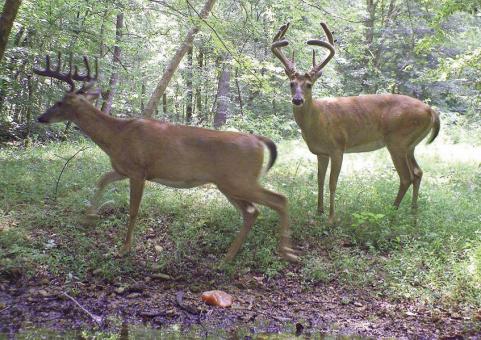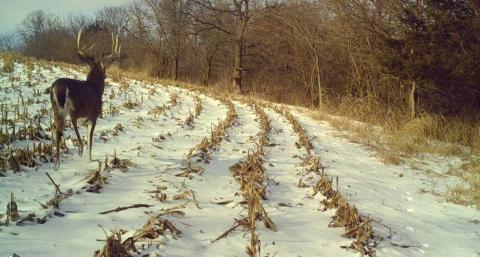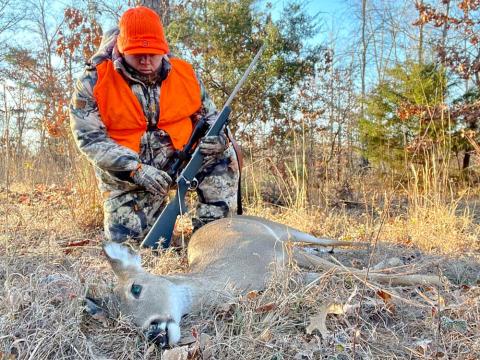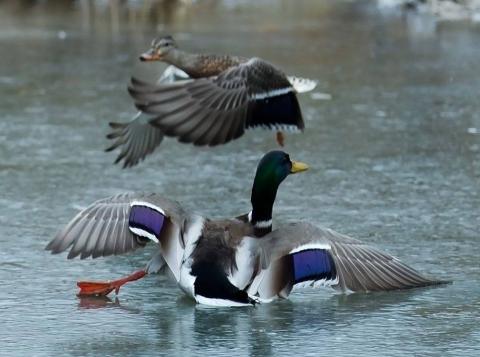A Diamond in the Rough
Brad Mormann | Originally published in GameKeepers: Farming for Wildlife Magazine. To subscribe, click here.
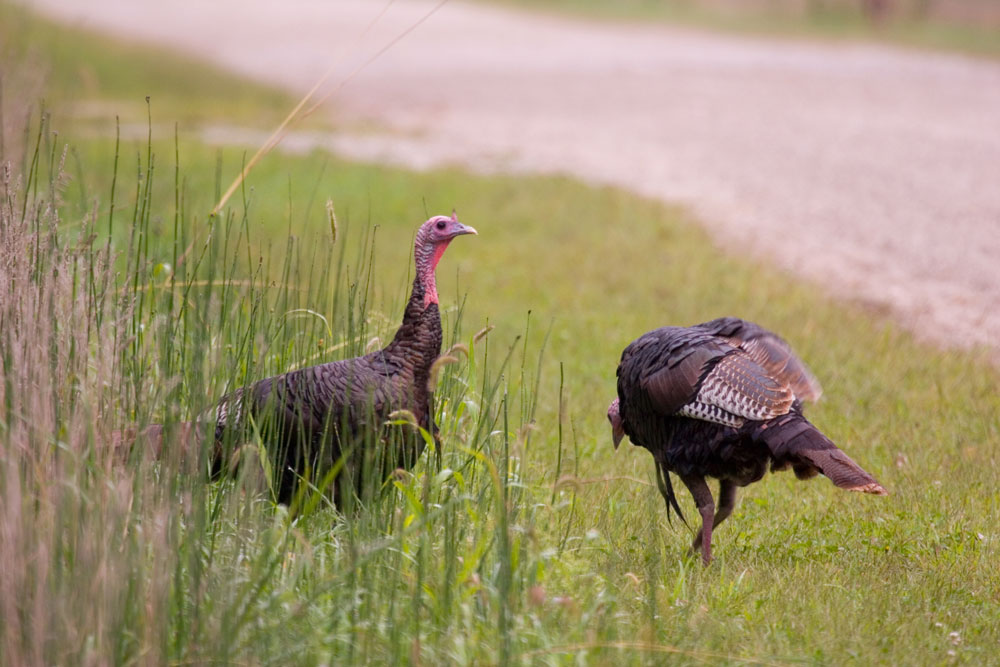
By definition “early successional habitat” is rapidly growing grasses, forbs, shrubs and trees that require frequent disturbance to be maintained. Early successional habitat can be a critical component to any fawn’s survival; pheasant, turkey, and quail’s nesting success; and whitetail buck’s security. Why, because it conceals and feeds! Very few other habitat types compare in the number of critters that utilize it.
Early successional habitat contains plants that do not like competition alongside those that thrive in it. Some plants stay short to the ground while others race to the sky. Some grow dense while others grow openly spaced. All of which are relatively close to the ground. With a diversity of micro habitats and forage variety the habitat provides wildlife with ample choices for bedding, nesting and forage selection.
If I were a person that didn’t enjoy the outdoors, early successional habitat would not be for me. This is because it is often difficult to see through because of its rapid ground level growth, walk through due to the abrasiveness of many plants like the giant ragweed that literally acts as sandpaper to wear the camouflage off your boots, and clean up due to the large numbers of stick-tight seeds that often cling to your clothes as you head for home.
No doubt, these aspects can be troublesome for us, but that’s what makes it perfect for wildlife. Wildlife are concealed by the visual cover, protected from weather and cold, and provided food. Yes, those stick-tights are awesome turkey and upland grub. And especially beneficial for deer, these habitats are often avoided by people preferring more easily traveled paths, creating a natural sanctuary.

These facts were obvious last fall when I visited a new hunting property containing 10 acres of CRP that was burned the previous spring. It was full of chest high plants from ragweed to goldenrod to resprouting saplings and shrubs. At ground level it was pretty open but at eye level it was dense. Being on a deer scouting trip, it just felt awesome. Everywhere I turned I was stepping on pockets of matted down “kidney bean shaped” beds throughout the vegetation. Then, without warning a buck leapt from his bed as my foot came down only inches away. He was no doubt startled, but still unsure of what I was because he stood staring back at me only 20 feet away.
As we both squinted to see each other through the vegetation I managed to snap a picture before he bounded out of the area. What a thrilling experience that wouldn’t have been possible had I walked the easy path around the newly burned CRP. As you can imagine, confidence in my new hunting area rose from the close encounter. It’s the very reason why these habitats are so important to a property. Deer and other wildlife can stack in like cordwood and still make a living. Early successional habitat comes in all shapes and sizes. Does the shape and size matter? That depends on why you encouraged or allowed it to grow. Any is good, but larger blocks can be better.
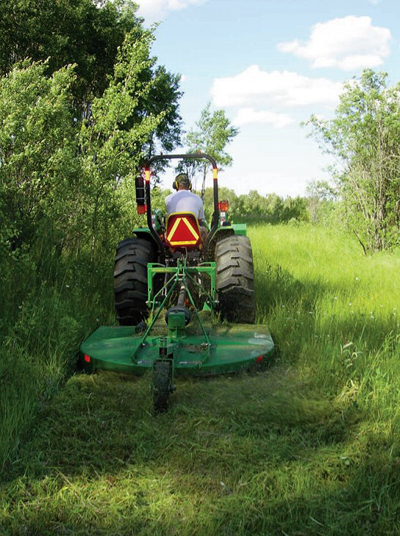
successional habitat, however, it should be used sparingly
because it can pile the clipped vegetation on the soil
surface so new plants have difficulty germinating.
An important location for early successional habitat in agricultural country is allowing it to grow in the corner of fields and in fence lines. Fence lines and field corners create corridors between larger habitat blocks and allow deer and other wildlife to spread out across a property to efficiently utilize resources while minimizing energy use. They are also frequently disturbed by tillage, herbicide and harvest techniques that continually kill or remove the vegetation which allows pioneers such as ragweed and pokeweed to maintain a foothold. Since these plants are utilized by a variety of game species and they do not compete well with other vegetation, disturbance is essential to their existence. Early successional habitat isn’t only in CRP or along an agricultural field, it is present in, and around our forests and woodlands as well. It can be created by many natural and manmade events ranging from one monarch canopy tree falling in a forest to floods, tornados and timber harvests.
Creating and Maintaining Early Successional Habitat
There are many methods to maintain early successional habitat. The biggest question is whether you want to have it in the same place year after year or if you want it to move around your property as you complete other management activities. Both require disturbance done by tools like disks, fire, herbicide, chainsaws, and in some situations mowing. Since succession is the transitioning of habitats from one form to another, in order to maintain early succession you have to keep resetting the growth of some or all of the plants in an area.
When the goal is to maintain one location in early successional habitat, yearly or every other year disturbance is required. Disking is a tremendous tool in grassland or old field sites. Disking breaks up the existing plants and their roots. It also shuffles the soil around so that some soil that was several inches deep is brought to the surface and vice versa. This brings a whole new set of seeds to the soil surface allowing them to germinate. One of the only downsides is unwanted invasive plant seeds can also be brought to the surface. In the Midwest that can occasionally mean the presence of Canada thistle. However, with monitoring, mowing and the occasional spot spraying, even this potential negative can be dealt with.
Prescribed fire sets back woody vegetation and herbaceous plants such as brome grass. In the case of grass, allowing it to put on at least 6 inches of growth before burning takes more of its root reserves away as it re-sprouts. It also removes accumulated thatch on the soil surface allowing annual plants to germinate. Probably most importantly in many cases, especially in larger blocks, it can be extremely cost effective. Depending on available equipment the cost may literally be a match and a few gallons of fuel.
Herbicide is often used to set back stands of cool season grasses or to thin stands of dense warm season grasses. Cool season grasses such as fescues and bromes often develop a thick mass of roots at the soil surface. These roots are great for holding the soil, but choke out other plants resulting in fields of only one or two plant species. In a field of only cool season grasses, applying Roundup in strips kills portions of the field to give dormant seeds a chance to germinate while maintaining soil stability in the adjacent live grass strips. To speed up the process a prescribed fire in the burned strips will reduce the thatch and blacken the surface increasing soil temperature and seed germination.
Warm season grasses such as switchgrass can beat out its competitors, so if your goal is to increase diversity and the presence of early successional species either a light herbicide application, burning during late summer, or moderate disking will help to create space and opportunity for other plants to grow.
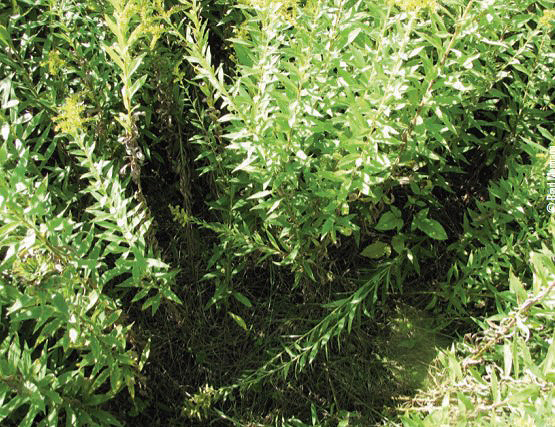
Chainsaws are an essential tool in creating woodland and forest early successional habitat. Most of the time early successional habitat is simply a result of timber management. Well planned timber harvests and thinning improves the growth of valuable timber and mast producing trees. Planning thinning activities to occur in alternating portions of the property ensures continual production of early successional habitat.
With holes punched in the woodland and forest’s canopy throughout the property more light reaches the floor providing sun loving plants an opportunity to thrive. These plants create the ground level cover and forage deer and other wildlife require. It also visually breaks up the habitat creating a “cordwood” effect. Yes, the ground level vegetation can get a little dense the season or two after a thinning. However if you are hunting deer on the 5th day of the gun season and the herd is in escape mode, where do you want to be hunting? For me it is in or near the cover.
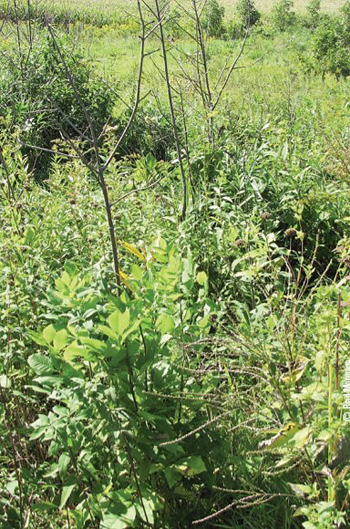
of micro habitats. Variations in the habitat structure
provide opportunities for wildlife to find the ideal
location for their nests, beds and feeding areas.
Mowing can be an important tool in maintaining early successional habitat but should be used sparingly. It is great for knocking the heads off of thistles before they go to seed, cutting back tall vegetation in new prairie plantings and prepping fire breaks. In general however mowing is detrimental to early successional habitat because it piles the clipped vegetation on the soil surface. With the clippings acting as mulch, few plants are able to germinate.
The Hunting Advantage
As I’ve mentioned several times already, early successional habitat contains food and cover for most of our favorite game and many nongame species. Seeing is believing, just as I re-assured myself during my encounter with that great buck in the recently burned CRP field. There are at least a couple of options available to maximize deer hunting success around these areas:
Create Your Own Crow’s Nest
This tactic was proven to me during my deer management work several years ago on a large property in western Georgia. The plan was deer population reduction, which meant many doe tags needed to be filled in addition to the harvest of fully mature bucks. As the new person to the team I consistently watched hunters favor hunting sites on the edges of clear-cuts and thinned pine stands.
After every hunt, of which the vast majority seemed to be successful, the hunters laughed about how they nearly got a nose bleed from climbing so high with their climbing tree stands, albeit the pines lack of branches made this fairly easy. They would settle in, overlooking the area not having a deer in sight. Then, as if appearing out of nowhere, deer would be standing where no deer were seen before. No, these deer weren’t walking into the area; they were merely standing up from their beds. The early successional habitat gave the deer herd a sense of security while the lofty stand site provided hunters the angle, a truly exciting experience.
Interception
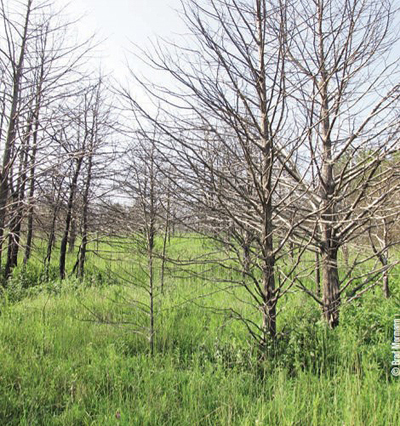
successional habitat. The eastern red cedar competition
was removed from this field allowing a huge number of
plants to germinate and take its place.
Since early successional habitat is often a bedding location of the deer herd, minimizing disturbance within it is important to keep the deer coming back. By hunting trails circling around it, especially in woodlands where less ground cover is present, less scent is left behind while entering and leaving stand sites and there’s just less disturbance overall. The more easily traveled periphery also provides tremendous ambush sites for bucks patrolling downwind of the bedding areas while scent checking for does or a safe spot to bed. Coupling this tactic with a stand location where deer are entering and leaving the early successional habitat is a recipe for success.
Depending on a property’s habitat management plan, early successional habitat may remain in one location or be moved around the property. Of all the habitat types it is one that requires a lot of help to maintain because periodic disturbance is required. Luckily disturbance can come from many sources and can even be a result of an income producing management activity. By understanding habitat types and how wildlife uses them on your hunting property, the stage is set for many memorable and fulfilling hunts.

















